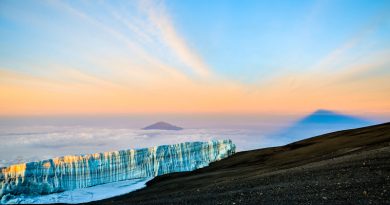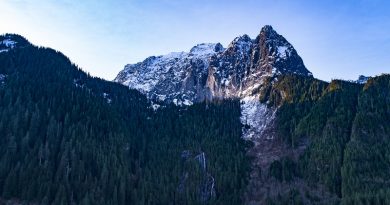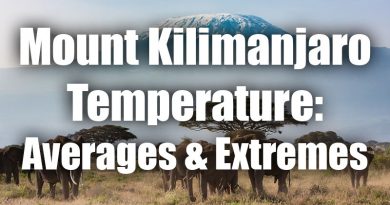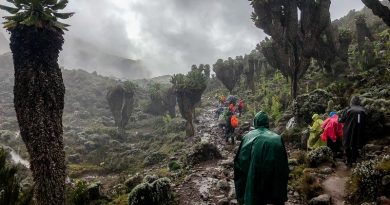California is the birthplace of American rock climbing. The first climb in the states was in Tuolumne Meadows (Yosemite) at Cathedral Peak and was done by John Muir in 18691. In 1875, after Muir’s brilliant on-site free climb, George Anderson scaled Half Dome covered in pine pitch and officially put Yosemite on the map for the climbers responsible for developing the new rock climb sport.
From that point on, technological advancements allowed climbers to begin attempting more and more difficult climbs. In 1958, Warren Harding led the first climb on “The Nose” of El Capitan, a climb that took him 48 days. Now, climbers are completing the once-impossible climb in hours with the latest record held by Alex Honnold and Tommy Caldwell standing at 1 hour, 58 minutes, and seven seconds.
The climbs of the Golden State are not only for ultra-elite El Capitan questers. There are thousands of gorgeous climbing areas ranging from along the Sierra-Nevada mountain range to the coast’s Santa Cruz mountains. California is indeed climber’s paradise, but a few locations are pure gold. Without further ado, here are the top 9 locations to climb in the state.
9. Lee Vining Canyon
This rock climbing central is 13.6 miles from Yosemite and is right by Mono Lake. It’s about 3.5 hours from Merced and Modesto. It’s known for the best ice climbing in California but also has a diverse number of climbs (around 200) that range from bouldering to alpine. Off the ice, the rock is classic white Sierra granite.
The area was pushed to the forefront in climbing circles after Yvon Chouinard (the founder of Patagonia) and Doug Robinson scaled the Main Wall on the Lee Vining Canyon in 1970. The climb is a WI3 that goes 100 feet up a frozen waterfall. Chouinard used the climb to test out a new pick that would thereafter increase the popularity of ice climbing and help make it into the sport that it is now.
Non-ice routes in the area include the Third Pillar and The Speed of Life. Third Pillar is a traditional 5 pitch, 800-foot 5.10- climb and one of the most popular climbs in the area. The climbing is mostly on crack but there is a solid mix of face and chimney climbing as well. This route on the Dana Plateau offers spectacular views of Mono Lake. The Speed of Life is a 5.11b, 2 pitch, 265-foot traditional alpine climb. It remains a more obscure climb due to the 45-minute grueling hike approach it requires but offers some fantastic fractured granite.
For the ice-enthusiasts, Lee Vining offers climbs such as Main Line, Cave Man, and Chouinard’s Right. Main Line is the most popular climb on the Main Wall. It’s a WI3-4 with two pitches. Cave Man is another ice classic on the main wall grading at WI5 and going up 250 feet with 2 pitches. Chouinards’ Right is the most popular route on the Chouinards wall. It’s graded WI3 and reaches 100 feet.
8. Bishop Area
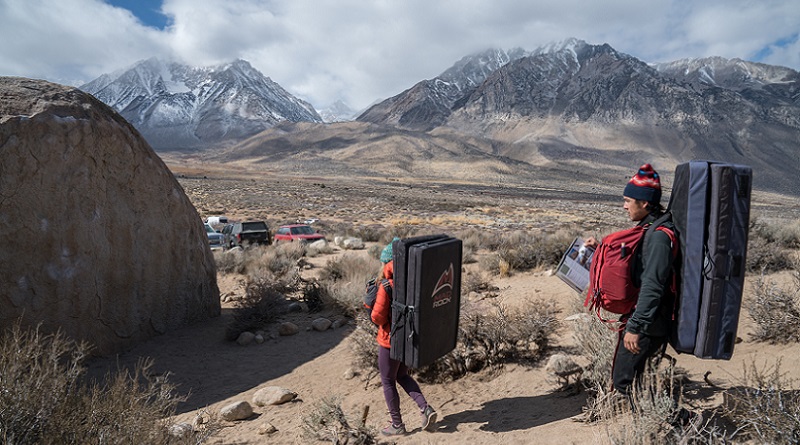
Bishop, California is about 3 hours south of Yosemite, 3.5 hours from Bakersfield, and 5 hours from Fresno. It’s one of the best bouldering loci in the state and is home to 2,524 different climbs. The rocks in the area are extremely diverse in size and shape. The area offers everything from V0-V16 in boulders and 5.nothing-5.14 routes for other climbs.
One of the best-known climbs in the area is Too Big to Flail a V10 55-foot highball on the Luminescence boulder. It was first climbed in 2012 by climbing legend Alex Honnold. Boulderers stand in awe of this giant rock that is especially difficult to climb due to the tiny hand/foot holds and how far they are apart.
Most of the earth in the Bishop area is alluvial fill, loose rocky sediment as caused by water erosion. Speckled across this high desert are the quartz monzonite boulders the area is known for. The grain on these boulders is rough so climbers with thinner skin should tape up to avoid unnecessary scrapes. The granite in the hills tends to be a bit finer-grained but remains in the same quartz family as the boulders.
The Bishop area’s history began with a massive and violent volcanic eruption around 750,000 years ago which created the Long Valley Caldera. After the eruption, the caldera collapsed only to be filled entirely with water from melted glaciers 150,000 years later. The soft volcanic rock eventually eroded which flooded the whole valley leaving the sediment and the gigantic boulders that currently lay scattered throughout the region.
A few notable climbs in the area include The Hunk, Jedi Mind Tricks, Strength in Numbers, Southwest Arete, and West Face. The Hunk’s sole problem is a V2 that goes up 20 feet. Jedi Mind Tricks is a V4 problem in the Pollen Grain area of Bishop. Strength in Numbers is an 18-foot V5 problem on one of the Sad Boulders of the tablelands. The tablelands are an especially fragile area, thus the Bureau of Land Management urges climbers to be careful and to protect the land when exploring.
Southwest Arete is a traditional/toprope 5.9- climb up 50 feet on the Grandma Peabody Boulder. Some people highball boulder this route, but this method is recommended for experienced boulderers only. West Face is arguably the best big wall climb in the area going up 550 feet with 4 pitches on perfect Sierra granite. This route is a 5.10a on the Cardinal Pinnacle.
7. Tahquitz and Suicide Rocks

Twenty-five point six miles from Hemet (a small-for-California town), 110 miles from Los Angeles, and 115 miles from San Diego, Tahquitz and Suicide Rocks is a bit out there. It’s high-up and secluded location by Mt. San Jacinto makes it more difficult to get to than the more popular Joshua Tree State Park. The area is known for grueling multi-pitch climbs geared towards very experienced climbers only.
The most notable happening in Tahquitz area climbing history is that the Yosemite Decimal System was developed by the Sierra Club into its modern form here. The YDS consists of three parts, grades for steepness (ranging from class 1 for a normal hike to 5.15d for the most difficult vertical climb), grades to show how long a climb will take (ranging from I for a couple hours to VII for a week or longer) and ratings for protection (ranging from G for good protection to X for no protection and extreme danger).
The legendary rock-climbing club, The Stonemasters used this area as their playground in the 70s. The Stonemasters were known less for iconic first ascents as they were for the way they went about climbing. Usually high and with girls in tow, the Stonemasters made climbing their lifestyle. To get into the club, men had to prove they could climb Tahquitz’s Valhalla, the first 5.11 in Southern California.
The rock itself is a variable granite that ranges from fine, smooth grain to rough and course. There are around 570 different climbs in this area. Some of the most popular routes include Fingertrip, The Long Climb, Traitor Horn, Flower of High Rank, and Vampire. Fingertrip is a 5.7, 400-foot climb with 4 pitches and the most popular route on Tahquitz. The Long Climb is a 5.8, 600-foot, 6 pitch climb on Tahquitz. It starts by a parallel crack (The Wong Climb) which many climbers have argued is superior to the Long Crack.
Traitor Horn is a 5.8 climb up 400 feet with 4 pitches on Tahquitz and is known for its two horns (the Traitor Horn and the True Horn). Flower of High Rank is a 5.9 traditional 160-foot route on Suicide Rock that was first climbed by Rob Muir in 1972. Vampire is another Tahquitz classic grading at 5.11a. It goes up 400 feet and has 4 pitches.
While not necessarily more dangerous than any other big wall 5.10+ climb, it is worthy to note that an experienced climber, 21-year-old Lucas Dunn, died on Vampire. On May 17, 2013 he was rappelling from Bat Crack when a loose rock hit him, causing him to fall 300 feet. Most of the climbs in this area, even the shorter sport climbs are rather challenging and best left to experienced climbers.
6. Hoover Wilderness

Just north of Yosemite lies the Hoover Wilderness. The word “wilderness” does well to describe this extremely mountainous and remote but absolutely gorgeous location. Getting to the climbing and camping area requires a 4.4-mile hike. The route most commonly used is Horse Creek Trail which starts at Annett’s Mono Village, a small local lakeside resort. They charge $5 for overnight parking if you want to make it into a backpacking trip. The trailhead is a 3.5-hour drive from Modesto and its surrounding city areas.
While day use of the wilderness does not require any hoop-jumping, staying overnight requires a wilderness permit from the U.S. Forest Service. There is no quota currently on the permits so it’s a rather simple process. Keep in mind that this is protected land and that those camping in the area should follow all regulations so that the land can remain safe and beautiful for all future visitors.
The climbs are all on Sierra granite, but the surrounding area has an interesting geologic history. Most of the terrain consists of volcanic rocks from thousands and thousands of years’ worth of eruptions and erosion. Around 400 million years ago, the entire Sierra-Nevada mountain range was completely covered by the ocean.
The event that created the mountains was a collision between the Pacific plate and the North American plate. The Pacific plate was forced below the North American plate in a process called “subduction.” This resulted in parts of the plate melting due to friction, then that melted rock rising to the surface and forming the mountains. Once the mountains were formed, glaciers grew on top of them and gradually carved out and eroded the peaks into the mountains we know today.
The area has around 40 previously established routes but one of the cool things about the wilderness is that there is always room for new climbs and first accents. Some great climbs there already include North Arete, Red Dihedral, Positive Vibrations, Brutus of Wyde Memorial Route, and Northwest Ridge.
North Arete is a 5.7, 6-pitch, traditional alpine climb on Matterhorn Peak. The first accent was in 1954 and was climbed by Jerry Gallwas and his party. Red Dihedral is the most popular route on the Incredible Hulk. This climb is a solid 5.10 with 12 pitches that goes up 1500 feet. For a more challenging Incredible Hulk route, try out Positive Vibrations, a 5.11a with 12 pitches that reaches 1200 feet.
The Brutus of Wyde Memorial Route is a 5.11- climb on the iconic Flatiron Butte. The first accent was done rather recently by Musiyenko Vitaliy and Caitlin Taylor in 2014. Northwest Ridge involves a bit more mountaineering than climbing but is a fantastic way to traverse the North Peak. The grade ranges from class 3 to easy class 5. Protection is necessary for some parts, but other parts involve a far gentler accent.
5. Real Hidden Valley
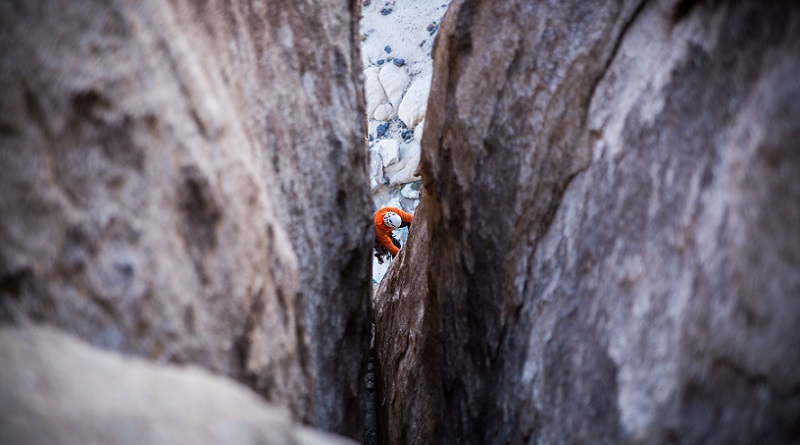
Located in Joshua Tree National Park, Real Hidden Valley is 13.8 miles from the nearest town (Joshua Tree, California) and 140 miles from Los Angeles proper. The park as a whole is huge and has many different areas in which people can climb but some of the best rock is found in the Real Hidden Valley (real as opposed to the allegedly inferior hidden valley climbing loci of Carolina and Virginia).
The environment is arid So-Cal dessert and the rocks are mostly quartz monzonite. It’s regarded as one of the best places for winter rock climbing. Even in mid-winter, day temperatures only go to the low 40s. Entrance into the park costs $15 for one week, $30 for an annual pass, and $50 for a general California national park pass.
Like the Sierra-Nevada mountain range, Joshua Tree was once underwater and was brought up by the Pacific plate colliding with the North American plate around 210 million years ago. The iconic rock formations that are scattered across J-Tree formed from magma that the plate collision produced. Instead of rising to the surface and creating mountains, these magma pools eventually cooled into quartz monzonite. Millions of years later, wind and water caused the rocks to crack and gradually become uncovered leaving huge boulder formations around the valley.
The Real Hidden Valley area is home to around 300 different climbs, most being shorter sport, traditional, and top rope routes. A few classics are Sail Away, Illusion Dweller, Run For Your Life, Leave it to Beaver, and Congratulations.
Sail Away is the area’s most popular and well-liked climb. It’s a traditional 5.8- climb up 60 feet of J-Tree’s rough granite on a formation named “Hidden Tower.” Illusion Dweller is a classic climb up The Sentinel’s west face. It grades at 5.10b and goes up 100 feet. Climbers like it so much that a beer company decided to name a line of craft beer after this route.
Run For Your Life is the most popular route on the Tumbling Rainbow formation. It’s a 5.10b R, the R being a warning for the largely unprotected first portion of the climb, after which it becomes fairly safe. Leave it to Beaver is a 5.12a route on the Sports Challenge Rock. Congratulations is a 5.10d R on the Thin Wall.
4. The Needles
The Needles is located north of the Sequoia National Forest. It’s 16.7 miles from Johnsondale, the nearest town, and a 2.5 hour drive from Bakersfield. The area is rich with folklore history and some of the crags are rumored to be haunted by the spirits of indigenous persons.
The first documented climb in the Needles was done by Dan McHale, creator of the McHale backpacks. He along with his company named some of the peaks in the area including Magician, Warlock, and Voodoo Dome. He made what was likely the first ascent up the Magician on a route he dubbed “Sidewalk Magic.”
The area features thousands of gorgeous sequoia redwoods but due to the dry climate, it is prone to forest fires. The Needles featured a prominent fire lookout tower that was built by the Civilian Conservation Corps 8,245 feet up on top of a rock formation. On July 28, 2011, the tower burnt down, not in a forest fire but in a structure fire. To avoid causing the forest to have a similar fate, do not use fire when in the area.
The climbs in the area have perfect Sierra granite and the views are described as “magical.” Some favorites are Igor Unchained, Airy Interlude, Thin Ice, White Punks on Dope, and Romantic Warrior. Igor Unchained is the most popular route on the Witch, grading at 5.9+ with 3 pitches and going up 450 feet. Another well-liked witch route is Airy Interlude, a 5.10a with 3 pitches.
Thin Ice is a 5.10b route on The Sorcerer with 3 pitches. It’s a strenuous mostly crack climb but is also the easiest climb on The Sorcerer. White Punks on Dope is a 5.9- 6-pitch climb on Voodoo Dome. Many claim it is the best moderate route in Central California and it is well-liked for how diverse each pitch is. Romantic Warrior is a 5.12b climb with 9 pitches. It’s a challenging and steep climb but definitely a Needles classic.
3. Wonderland of Rocks
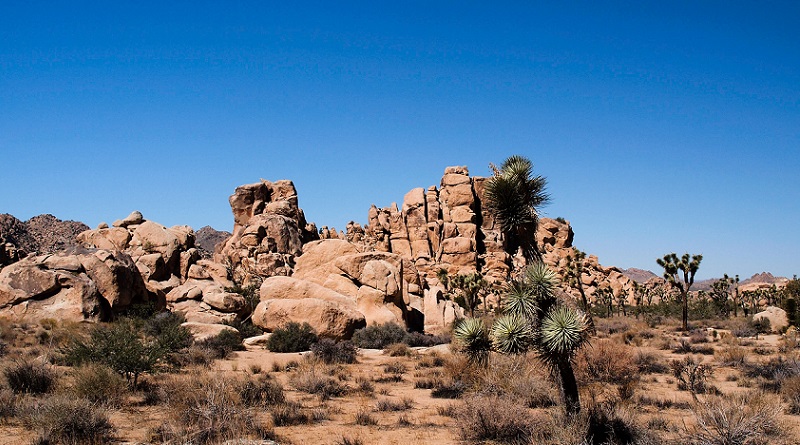
Located in the Northwestern part of Joshua Tree State park, the Wonderland Valley climbs are a highlight of the So-Cal climbing experience. West Wonderland Valley is home to hundreds of climbs and to famous formations such as the Astro Domes and The Creature. The rocks are about 15 miles from Joshua Tree, the town, and a 2.5-hour drive from Los Angeles.
The region’s climbing history began with the Sierra Club’s Rock Climbing Section in the 1940s. They would organize climbing excursions for both their members and for kids in Boy Scouts. As the area grew in popularity, well known climbers such as Royal Robbins, Yvon Chouinard, T.M Herbert, Mark Powell and Eric Beck began visiting J-Tree frequently and creating new routes across the park.
During the early days of Josh climbing, Joshua Tree was recognized as a monument, not a national park. Much like how modern climbers use terms like “Josh” or “J-Tree,” the older climbers used to call the area simply “The Monument.” In 1994, under the California Desert Protection Act, the region was sanctioned off into what is now the Joshua Tree National Park.
As mentioned in The Real Hidden Valley section, the rocks in this area are quartz monzonite, a rough and fantastic climbing terrain. desert ecosystem is delicate and nearly 100 years of human tampering has done little to help. Activist groups such as Friends of Joshua Tree try to educate climbers about the ecology of the area. Make sure to follow the principles of leave no trace and to tread lightly on the desert ground.
Some of the best climbs in the area include Mental Physics, Breakfast of Champions, Solid Gold, High Strung, and Too Secret to Find. Mental Physics is one of the most popular climbs and certainly the best route on the Lenticular Dome. It’s a 200-foot 5.7 with 2 pitches. Breakfast of Champion is a traditional 5.8+ climb on the south Astro Dome. It goes up 170 feet and has 2 pitches.
Solid Gold is recognizable for the distinct yellow-orange stripe that the route follows up the south Astro Dome. It’s a 5.10a/b climb 200 feet up with 2 pitches. High Strung is a traditional 80-foot 5.9 climb on Foolproof Tower. Too Secret to Find is a 5.10b traditional climb 80 feet up Hidden Dome.
2. Lake Tahoe

Not only is Lake Tahoe a fantastic spot for a vacation, it’s one of the best rock climbing locations in California, only second to Yosemite. In fact, while Yosemite has some of the best difficult climbs in the world, Lake Tahoe has fantastic scenic climbs of similar quality but with an easier grade. It’s the moderate climber’s paradise.
Lake Tahoe is in the Sierra Nevada mountain range and is divided almost down the middle by the California-Nevada state border. There are small skiing and resort town all around the lake but the closest larger town is Carson City which is about 20 miles to the east over the border. The closest major California city is Sacramento, a 2 hour and 15 minute drive to the southwest.
The region became a climbing hotspot in 1967 thanks to Steve Roper, a writer and a climber who had an article on Tahoe climbing published in Ascent. Roper discovered Lover’s Leap and fell in love with the simple, rough granite. Tom Higgins was another important Lover’s Leap figure. He was the first to climb The Line (5.9, 400’) without aid gear, an impressive feat for the 60s when climbers used hiking boots and rudimentary pitons.
Elsewhere in Tahoe, Warren Harding (the man who first scaled El Capitan) climbed around Sugerloaf. One route in particular is named Harding’s Chimney for his impressive first ascent of this three-pitch climb. Even though it rates at 5.7, many climbers hesitate to take it on due to the lack of protection. The climb starts with 50 feet of rock that is unprotected for a lead climber making it rather dangerous.
Another iconic Lake Tahoe crag is Donner Summit (named for the infamous exploration party that became cannibals and ate each other while traversing the Sierra-Nevadas). In the 1970s Max Jones and a couple of his friends took it upon themselves to develop free-climbing focused routes at Donner Summit.
Tahoe is home to over 2,000 routes. Some of the best climbs in the area include Corrugation Corner, One Hand Clapping, Space Truckin’/Space Walk, and Surrealistic Pillar Direct. Corrugation Corner is a 5.7 3 pitch climb that goes 300 feet up the Main Wall at Lover’s Leap. One Hand Clapping is a traditional 5.9, 4 pitch climb venturing 400 feet up Donner Summit’s Black Wall.
Two of the best climbs on Eagle Lake Cliff are Space Truckin’ and Space Walk. Truckin’ is a 5.10a traditional/toprope sport climb and Walk, located just above on an overhanging crack is a 5.11d. Surrealistic Pillar Direct is another Lover’s Leap classic. It’s a 5.10 climb 70 feet up granite layered with tiers that runs alongside a crack.
1. Yosemite
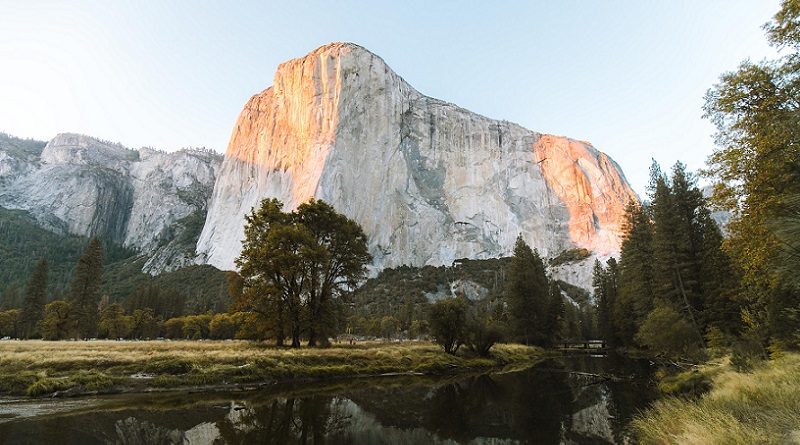
It’s the birthplace of American rock climbing. No article describing California rock climbing would be complete without it. From Muir’s first climb to the sub-two-hour sprints up El Capitan, Yosemite has been a mandatory destination for rock climbers across the globe.
Yosemite is about two hours from Merced, the nearest city, 3 hours from San Jose and the Bay Area, and 3.5 hours from Sacramento. In the dead heart of the Sierra-Nevada mountain range, it is the most popular natural landmark in the state. As such, it is a busy area year-round and climbs will nearly always require a long wait.
Entire books could easily be written on Half Dome or El Capitan alone, but they’ve already been written so instead here are a few legendary classic Yosemite climbs, all of which are five stars, hands-down: The Zodiac, The Nose, Snake Dike, Half Dome Northwest Face, and Southeast Buttress.
Zodiac and The Nose are two famous routes on El Capitan. Zodiac is a grade VI C3 aid route, though reportedly some people have climbed all 1800 feet clean. The first Ascent was accomplished by Charlie Porter in 1972. The Nose is a VI C2 aid route that goes 3000 feet up, and some people have also done this route without aid. Warren Harding and his party made the first ascent in 1958 and Lynn Hill was the first woman to climb El Capitan in 1993.
Snake Dike and Northwest Face are both climbs on Half Dome. Snake Dike is a moderate 5.7 route with 8 pitches for those who want more of a challenge than the Half Dome cables and a less intense route than the Northwest Face. The Face is a 5.9 C1 grade VI climb with 23 pitches. After a rock fall in 2015, some pitches have been removed and some of the rock has become more unstable, so this climb is for advanced climbers only.
The Southeast Buttress is a moderate 5.9 alpine climb with 5 pitches that goes 700 feet up Cathedral Peak, another iconic Yosemite formation. The first ascent for this more moderate climb was completed in 1943 by Wilts and Spencer Austin.

